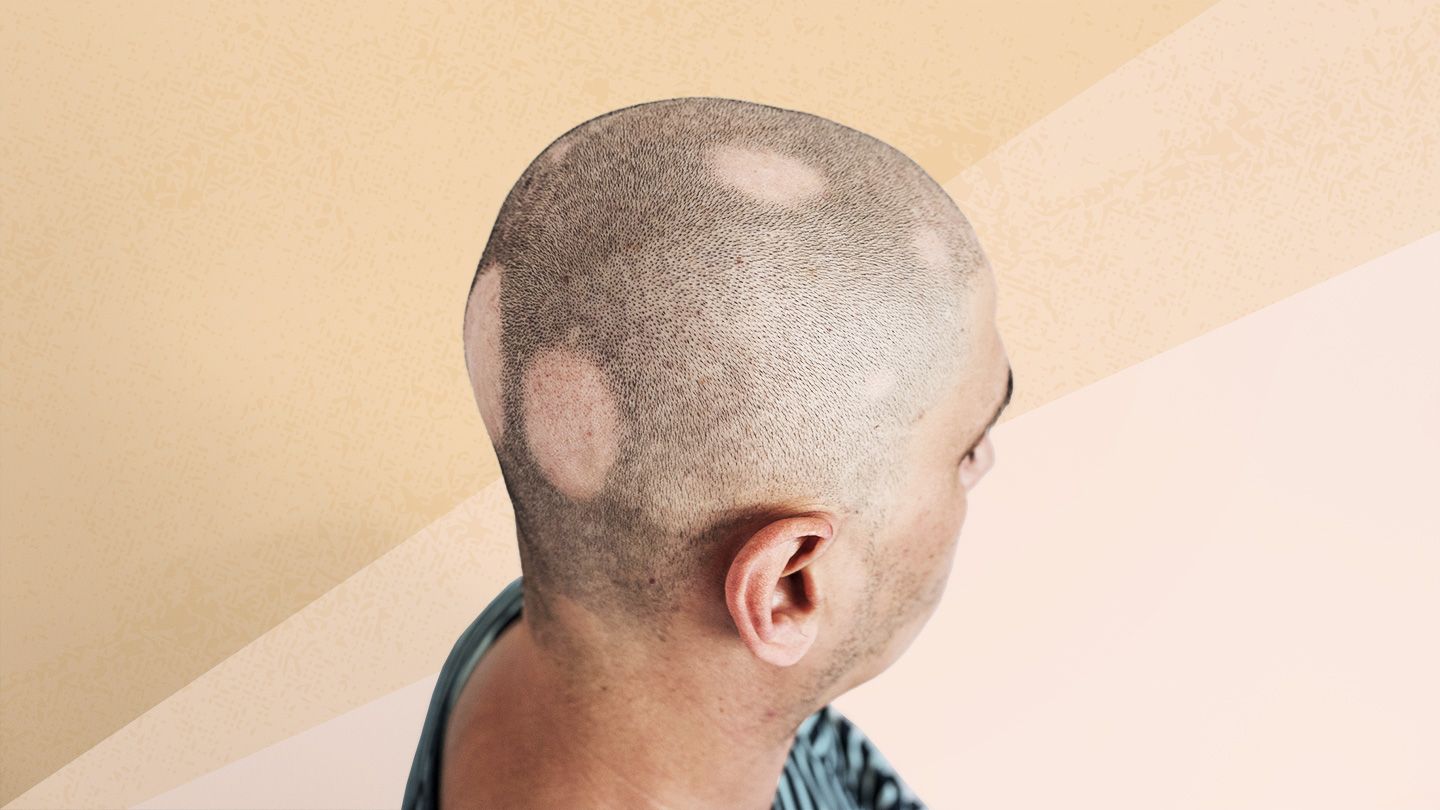While the primary forms of alopecia areata are patchy alopecia areata, alopecia totalis, and alopecia universalis, there are other important types to know, including diffuse and ophiasis forms. Also, alopecia areata can cause changes to the nails in some people. Here’s a breakdown of other symptoms of these less-common subtypes.
Diffuse Alopecia Areata
Diffuse alopecia areata is an unusual form that occurs suddenly and involves widespread scalp hair thinning. Doctors may also misdiagnose this condition as other forms of hair loss.
“Diffuse alopecia areata presents itself as sudden thinning of the hair all over the scalp and is often confused with androgenetic alopecia (male or female pattern hair loss) or telogen effluvium (temporary hair loss due to a trigger like stress, hormonal changes, or medication),” says Michele Green, MD, a cosmetic dermatologist in New York City.
“Hair loss can be reversible with early detection and treatment, although some forms of hair loss are irreversible,” she says. It’s important to see a dermatologist for an accurate alopecia areata diagnosis and to discuss your treatment options. Treatment may also help prevent further hair loss. If you need treatment for regrowth, the earlier you start treatment, the more likely you are to see regrowth.
Ophiasis Alopecia
Like diffuse alopecia, ophiasis alopecia affects the scalp; the hair loss occurs in a band along the sides and back of the head.
Nail Changes in Alopecia Areata
While not an official subtype, alopecia areata may also cause nail problems in both the fingernails and toenails in some people. Alopecia areata of the nails sometimes occurs years before or after hair loss due to the condition.
Alopecia areata can also affect your nails without causing hair loss. In most cases, the conditions develop simultaneously, especially in severe forms of alopecia areata that affect children.
Nail changes may affect 10 to 20 percent of people with alopecia areata, and may cause the following symptoms.
- Tiny dents in the nails
- Extremely brittle nails, which may split
- Red-colored nails
- Texture changes that are rough and may feel like sandpaper
Read the full article here




